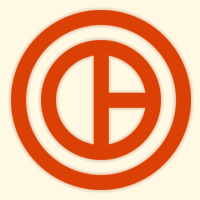One of the details that can be tough to keep track of with a large or fast-moving website is language consistency. Of course, to be consistent, you need to decide what to use. I did an audit of the most popular English-language sites (as determined by Alexa and Compete), to see how three key phrases were being used. These were:
Login/Log In/Sign in – The action of authorizing your account.
My/Your – My Movies, Your Account, etc.
Join/Sign Up/Register/Create – Creating a new account.
Here is the raw data, see below for some analysis.
| adultfriendfinder.com |
login |
my |
join |
| aim.com |
sign in |
my |
join/get |
| amazon.com |
sign in |
your |
start |
| aol.com |
sign in |
my |
sign up |
| bankofamerica.com |
sign in |
your* |
enroll |
| blogger.com |
sign in |
my |
create |
| craigslist.com |
login |
N/A |
sign up |
| deviantart.com |
login |
N/A |
become/join |
| ebay.com |
sign in |
my |
register |
| facebook.com |
login |
my |
sign up |
| flickr.com |
sign in |
your |
create |
| fotolog.com |
log in/login |
my |
join |
| friendster.com |
log in |
my |
sign up |
| go.com (espn) |
sign in |
my |
register |
| google.com |
sign in |
my |
create |
| hi5.com |
log in |
my |
join |
| imageshack.us |
login |
my |
signup |
| imdb.com |
login |
my |
register |
| live.com |
sign in |
my |
sign up |
| mininova.com |
login |
my |
register |
| msn.com |
sign in |
my |
sign up |
| myspace.com |
login |
my |
sign up |
| neopets.com |
login |
my |
sign up |
| photobucket.com |
log in |
my |
join |
| pogo.com |
sign in |
my |
register |
| rapidshare.com |
login |
my |
join |
| store.apple.com |
login* |
N/A |
create/set up |
| veoh.com |
log in |
my |
register |
| walmart.com |
sign in |
my |
create |
| wikipedia.org |
log in |
|
create |
| wordpress.com |
login |
my |
sign up |
| yahoo.com |
sign in |
my |
sign up |
| youporn.com |
login |
my |
register* |
| youtube.com |
log in |
my |
sign up |
* Inconsistent
“My” is the clear winner over “Your”, with 27 mys, 3 yours, and 2 that avoid using possessive pronouns.
“Login” takes the edge over “Sign In”, 20-14. “Sign In”, however, seems to be more popular with the biggest of the big sites, like Yahoo, Microsoft’s sites, and Google. I’d say this is a tossup, and I have a feeling that in a few years signup with come to dominate. Of those using login, 13 use “login”, and 7 use “log in”, with the space.
There’s a plurality of choices for sign up, with “sign up” being used on 12 sites. 7 used join, 7 used register, 6 used create (an account), 1 used start, and 1 used enroll. This is not an independent choice, however, as “sign up” is often seen where “log in” is used, and sites that use “sign in” use something like “register”. AOL, Microsoft, and Yahoo use “sign in/sign up”. I suspect that some people think using such similar phrases would be confusing, and I agree, despite the appeal of the general consistency.
My preference is to use “my, “log in”, and “sign up”. “Join” seems ambiguous, “register” seems bureaucratic and expensive, while “create an account” just feels a little dorky.
Dishonorable Mention: The Apple Store, supposed paragon of usability and attention to detail, is the worst offender on this list in terms of mixing and matching the terms, often on the same page. They also fail miserably on one major point, there’s no logout button!



 The best Batman movie since the first, The Dark Knight was everything fans of superhero movies could want. Cast, music, and effects were up to expectations, while the real highlight was the writing behind Ledger’s excellent performance. Comparisons to
The best Batman movie since the first, The Dark Knight was everything fans of superhero movies could want. Cast, music, and effects were up to expectations, while the real highlight was the writing behind Ledger’s excellent performance. Comparisons to  I’ve lately been fortunate enough to eat at two amazing restaurants. The first was
I’ve lately been fortunate enough to eat at two amazing restaurants. The first was 

 At some point in your life, your parents probably told you “life isn’t fair”. The Coen Brothers expand on this story with a ruthless, precise rendering that ended up being my favorite movie of 2007. Its not fun or funny, there’s a couple hiccups, but this film will stick to your ribs.
At some point in your life, your parents probably told you “life isn’t fair”. The Coen Brothers expand on this story with a ruthless, precise rendering that ended up being my favorite movie of 2007. Its not fun or funny, there’s a couple hiccups, but this film will stick to your ribs.